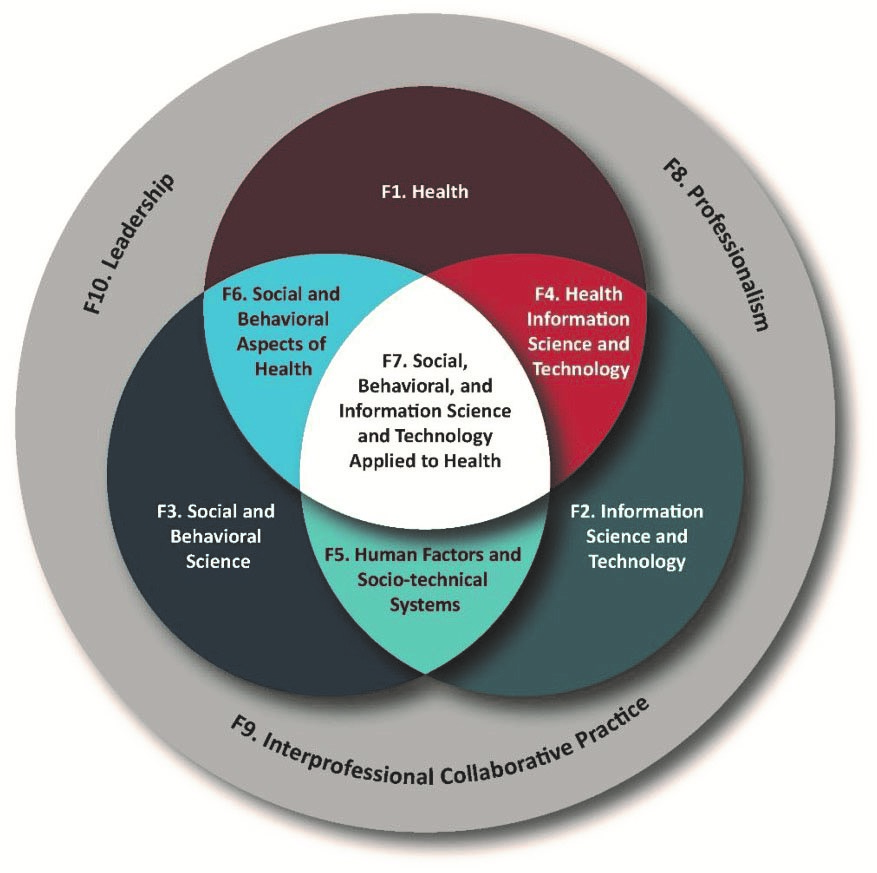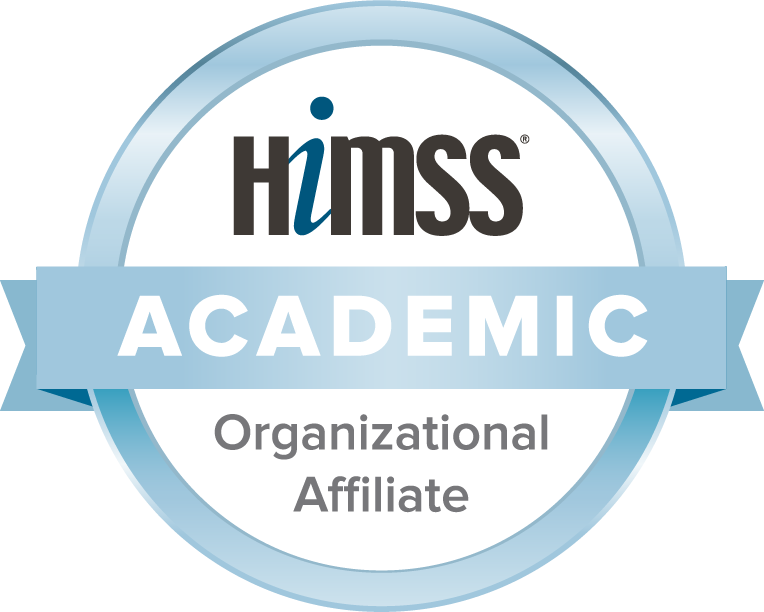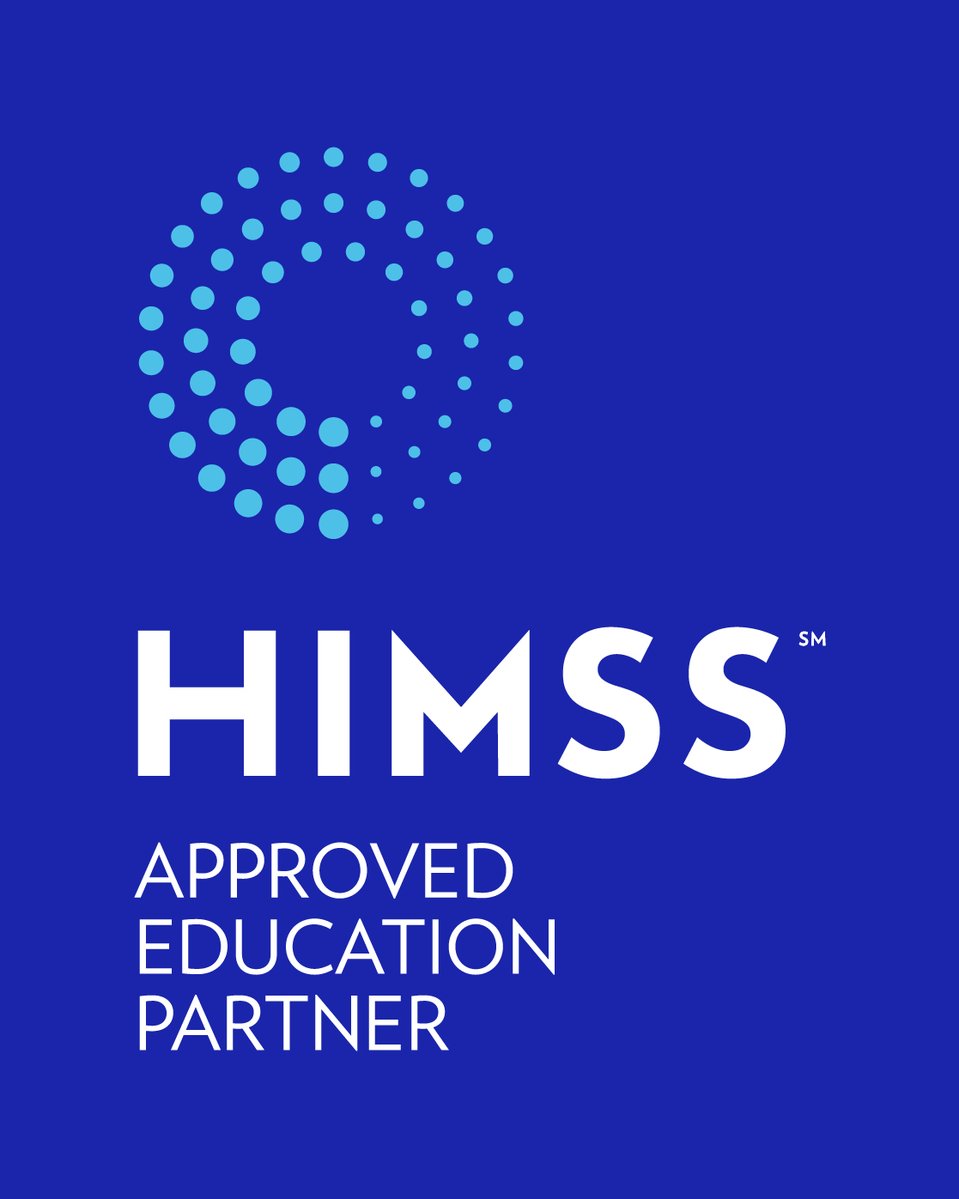
Level up with an online Master of Science in Health Data Analytics!
Do you want to help transform the world of Healthcare? The M.S. Health Data Analytics program will help to create and grow highly effective leaders in the fields of Health Data Analytics and Applied Informatics. Graduates of the program will gain critical knowledge of the innovative tech and analytical skills needed today to transform and improve healthcare delivery, administration, research and outcomes.
The Master of Science in Health Data Analytics program is designed to equip students with the skills to analyze complex health data, harness advanced statistical and machine learning techniques, and translate findings into actionable insights. Graduates will be prepared to address critical challenges in healthcare, such as optimizing patient outcomes, improving operational efficiency, and supporting evidence-based decision-making through the use of data.
- HCA 525: Epidemiology and Population Health Informatics3 credits
- HCA 640: Applied Statistical Research in Health Sciences3 credits
- HIF 530: Introduction to Health Informatics and Hot Topics3 credits
- HIF 535: Health Information Analytics3 credits
- HIF 550: Clinical Database Management3 credits
- HIF 610: Information Systems Analysis and Design3 credits
- HIF 635: Advanced Data Analytics3 credits
- HIF 645: Health Information Security and Application3 credits
- Research Methods & Data Visualization3 credits
- Big Data & Data Mining3 credits
- *HIF 695: Health Informatics & Analytics Capstone3 credits
- Core Total33 credits
* This course will not be accepted in transfer and can only be taken at Charter Oak. Minimum grade of 'B' is required.
HCA 525: Epidemiology and Population Health Informatics
This course is a comprehensive analysis of the U.S. health care delivery system including the interface with the public health system from a systems approach. This course introduces epidemiological principles and analytics for enhancing utilization management, quality improvement, and outcome assessment. This course covers topics within the core disciplines of public health and studies the distribution and determinants of health-related conditions for disease control using health information technology. (Formerly titled: Community Health Concepts).
HCA 640: Applied Statistical Research in Health Sciences
In this course, graduate students will develop the knowledge and skills needed to make informed decisions as professionals working in the health services field. This includes the utilization of descriptive and inferential statistics to assess health data and covers the principles and methods of data analysis and inference. The course is designed to provide students from a variety of backgrounds with the foundations of research methods in health services administration and health informatics. Emphasis is on the use and application of various data analysis techniques and their assumptions in analyzing health related data and data sets. The course is also intended to acquaint students with the conceptual and methodological issues of research design and secondary data analysis widely used in empirical health services research. This course concludes with the production of a scientific research proposal for the final project of the Program’s Capstone Course. (Formerly Titled: Research Methods in Healthcare).
HIF 530: Introduction to Health Informatics and Hot Topics
This course provides students with a broad overview of the role of health care information systems (HCIS) in health care delivery and examines conceptual and theoretical foundations of business management principles and practices essential to health informatics. This course provides the fundamentals of the acquisition, storage, and use of information in the clinical informatics setting. Emphasis is given to clinically transformative technologies which include fundamental knowledge of the concepts of health informatics and how technology can be used in the delivery of healthcare. The intent is to increase the student’s capacity for the design, configuration, use, and maintenance of informatics interventions that improve healthcare delivery. This course will also examine the trends impacting the clinical informatics field and the impact of natural and artificial systems and practices. (Formerly Titled: Healthcare Informatics & Technology).
HIF 535: Health Information Analytics
This course examines and applies analytic methods, data handling, and data cleansing techniques, strategies, and the use of Information Technology (IT) tools for data collection, data analysis, reporting and knowledge management. Applies current theoretical models and research to clinical practice to gain new knowledge from data. Requires students to use analytic tools for analyzing healthcare data with statistics, data visualization, data mining, big data, data warehousing, and report generation. Students will gain an understanding of data visualization, implanting scientific decision making, and using predictive data analytics. (formerly titled: Healthcare Data Analytics) **Important Note: Combines Data Analytics and Advanced Data Analytics.
HIF 540: Health Data Vocabularies and Standards
Students are introduced to various standardized clinical terminologies, healthcare information standards, data sets required for state and federal reporting, and electronic standards needed to attain interoperability. Emphasis is on developing expertise in identifying their appropriate uses and sources and applying them within and among health information systems to promote interoperability. Students apply knowledge discovery and extraction techniques such as natural language processing and text mining. This course integrates key issues and techniques of technical infrastructure and data architecture in clinical informatics and the role of standards and ontologies in health care. (Formerly Titled:Advanced Vocabularies and Classification Systems).
HIF 550: Clinical Database Management
Addresses healthcare database theory, database design and query of health databases. Utilize technology for data collection, storage, analysis, and reporting of information by applying knowledge of database architecture and design to meet organizational needs. This course covers basic to intermediate knowledge of the concept, the design, and the implementation of database applications in healthcare. Students will study tools, data models, relational systems, and database administration.
HIF 610: Information Systems Analysis and Design
This course introduces students to computer programming with a focus on the phases of the systems development life cycle. Students will develop the knowledge and skills needed to be able to evaluate and produce systems design to build software systems for business and analytical information management purposes and to explore human factors, consumer informatics, principles and the application of usability assessments for the development and use of health information technology by clinicians and patients. This includes the ability to apply the basic theoretical and conceptual foundations in systems design and software development such as systems analysis and design, methodologies, techniques, and tools. (Formerly Titled: Systems Design & Software Development).
HIF 615: Information Technology Project Management
This course is designed to provide an in-depth understanding of the concepts, strategies, and solutions that support the planning, scheduling, controlling, resource allocation, and performance measurement activities required for successful completion of a health information system project utilizing project management tools and frameworks.
HIF 635: Advanced Data Analytics
Using advanced data analytics can improve patient outcomes, lower costs, improve quality and enhance the overall health delivery system performance. This course will provide an in-depth and real-world comprehension of advanced healthcare data analytics topics and the intersecting fields of data mining. The course consists of hands on projects through the understanding of data visualization, implementing scientific decision making, and using predictive data analytics. This includes the use of data to make decisions on business goals and objectives as various types of healthcare organizations and emerging financial models depend on healthcare data analytics. Students will utilize tools and techniques to illustrate and present new knowledge regarding the operations, financial, quality, business intelligence, care and policy in healthcare settings that help to fuel data-driven cultures.
HIF 645: Health Information Security and Application
Study of the technical aspects of data security in healthcare systems. This course will cover strategies for designing, implementing, auditing, and evaluating the technical, physical and human components of an information security system that adhere to a healthcare organization’s legal, ethical and organizational requirements. This course focuses on assessment of security vulnerabilities, threats, breaches, and the exploration of technical applications and software tools used for securing health information systems. (Formerly Titled: Healthcare Information Security Systems).
HIF 695: Health Informatics & Analytics Capstone
The capstone course is the final course in the M.S. Health Data Analytics Program in which students present the results of their Final Research Projects and explore current issues relative to the field of Health Informatics in a rapidly changing healthcare delivery system. Each student completes the applied research project and presents the project for professional and peer evaluation. (Formerly Titled: Health Informatics Masters Capstone and M.S. Health Data Analytics Capstone). Prerequisite(s): HIF535, HCA640.
- A bachelor's degree from a regionally accredited institution, or international institution equivalent to a U.S. regionally accredited institution, with a grade point average of 3.0 or better. Students with GPA’s between 2.7 and 3.0 may be considered in combination with other admissions criteria.
- Professional resume.
- 500-700 word essay describing specific career goals and objectives and motivation to pursue the advanced degree.
- A minimum 'B-' grade is required in all graduate courses with the exception of the Capstone Course which requires a minimum “B” grade. Students must obtain an overall GPA of 3.0 (B) in order to graduate. All students should refer to the Academic Probation policy regarding grades lower than a 'B-' in the graduate program.
The M.S. Health Data Analytics Program Competency Model is designed to include AMIA’s Domains identified as pertinent and essential foundation for Health Informatics. The Domains and Competencies are aligned with the program’s overall mission and vision of the program.
AMIA – the discipline of health informatics exists at the confluence of the following major Domains:
F1. HEALTH
Health refers to the biomedical and health sciences underlying AMIA’s 5 major informatics areas: translational bioinformatics, clinical research informatics, clinical informatics, consumer health informatics, and public health informatics. The biomedical and health sciences aim to understand and improve human health. To identify and develop solutions to biomedical informatics problems, students must understand the history, goals, methods (including data and information used and produced), and current challenges of the major health sciences, including human biology, genomics, clinical and translational science, healthcare delivery, personal health, and public health.
Knowledge
At the time of graduation from an applied Master of Science in Health Data Analytics Program, the graduate student will be able to...
Describe the history, goals, methods (including data and information used and produced), and current challenges of the major health science fields. These include biology, genomics, clinical and translational science, healthcare delivery, personal health, and public health.
F2. INFORMATION SCIENCE AND TECHNOLOGY
Information Science and Technology refers to the key concepts, methods, and tools for creating, acquiring, storing, representing, accessing, merging, organizing, processing, transferring, analyzing, reporting, and visualizing data, information, and knowledge. It also includes the methods and tools for protection of the data, information, and knowledge from unauthorized access. Included are under- standing how information is used and the ability to assess the information needs of users. Familiarity is required with basic computer science terminology and concepts, including terms and concepts related to information systems and computer programming, information retrieval, ontologies, business intelligence, analytics, and user interface design.
Knowledge
At the time of graduation from an applied Master of Science in Health Data Analytics Program, the graduate student will be able to...
Identify the applicable information science and technology concepts, methods, and tools, which may be dependent upon the ap- plication area of the training program, to solve health informatics problems. These include the concepts, methods, and tools related to managing data, information, and knowledge, the basic information and computer science terms and concepts, the principles of information security, as well as the methods of assessing users’ information needs.
F3. SOCIAL AND BEHAVIORAL SCIENCE
Social and Behavioral Science refers to basic social, behavioral, psychological, and management theories, methods, and models as well as the legal and regulatory frameworks that seek to describe human actions and interactions as well as human behavior in society. It includes concepts from fields such as sociology, economics, anthropology, political science, law, psychology, and management and cognitive sciences. It is concerned with the application of social, behavioral, psychological, and management theories, methods, and models to the design, implementation, and evaluation of health in- formation behaviors at the levels of individual, social group, organizations, and society, which are influenced by laws and regulations. The purpose is to contribute to decreasing health-damaging behaviors and improving health-promoting behaviors and psychosocial well-being through health informatics perspectives.
Knowledge
At the time of graduation from an applied Master of Science in Health Data Analytics Program, the graduate student will be able to...
Identify the effects of social, behavioral, legal, psychological, management, cognitive, and economic theories, methods, and models applicable to health informatics from multiple levels, including individual, social group, and society.
F4. HEALTH INFORMATION SCIENCE AND TECHNOLOGY
Health Information Science and Technology refers to the array of health information science and technology methods, tools, and standards for collecting, organizing, representing, sharing, integrating, using, governing, and learning from biomedical and health data, information, and knowledge across the entire spectrum of informatics domains. Systems design and development addresses standards, integration, interoperability, and protection of information. These competencies also address computational thinking, which includes problem solving, systems design, and understanding human behavior, as associated with computer science.
Knowledge
At the time of graduation from an applied Master of Science in Health Data Analytics Program, the graduate student will be able to...
Identify possible biomedical and health information science and technology methods and tools for solving a specific biomedical and health information problem. Core health information technology tools may be dependent upon the application area of the training program.
Skills
At the time of graduation from an applied Master of Science in Health Data Analytics Program, the graduate student will be able to...
Design a solution to a biomedical or health information problem by applying computational and systems thinking, information science, and technology.
Attitudes/abilities
At the time of graduation from an applied Master of Science in Health Data Analytics Program, the graduate student will be able to...
Demonstrate consideration of the advantages and limitations of using information science and technology to solve biomedical and health information problems as well as the needs of the different stakeholders and context.
F5. HUMAN FACTORS AND SOCIO-TECHNICAL SYSTEMS
Human Factors and Socio-technical Systems refers to the interactions between human behaviors (physical, social, cognitive, and psychological) and information technologies. People and organizations are the ultimate users of health information and technologies. This domain draws on the social, behavioral, cognitive, economic, hu- man factors engineering, and management and systems sciences in considering the needs, workflows, and practices of individuals and organizations in the context of information systems and technology.
Knowledge
At the time of graduation from an applied Master of Science in Health Data Analytics Program, the graduate student will be able to...
Draw on socio-technical knowledge regarding the social behavioral sciences and human factors engineering to apply to the design and implementation of information systems and technology.
Skills
At the time of graduation from an applied Master of Science in Health Data Analytics Program, the graduate student will be able to...
Apply social behavioral theories and human factors engineering to the design and evaluation of information systems and technology.
Attitudes/abilities
At the time of graduation from an applied Master of Science in Health Data Analytics Program, the graduate student will be able to...
Demonstrate consideration and respect for the role of users in the design and application of information systems and technology.
F6. SOCIAL AND BEHAVIORAL ASPECTS OF HEALTH
Social and Behavioral Aspects of Health refers to action(s) taken by an individual, groups of individuals, or an organization to manage the health of an individual or population. It entails social determinants and patient-generated data, analyses of problems arising from health or disease, the implications of these problems on daily activities, and the practical solutions to managing these problems. Patient behavior (that may be affected by genotypes and phenotypes), health literacy, informed decision making, patient engagement, and patient activation are examples of issues in this domain. Other common topics in this domain, depending on the program focus, may include health-behavioral paradigms, such as health and healthcare self- management, substance abuse, utilization of healthcare services, characteristics of nutrition, exercise/physical activity habits, organizational network analyses, precision medicine and individualized care, etc.
Knowledge
At the time of graduation from an applied Master of Science in Health Data Analytics Program, the graduate student will be able to...
Identify theories or models that explain and modify patient or population behaviors related to health and health outcome.
Skills
At the time of graduation from an applied Master of Science in Health Data Analytics Program, the graduate student will be able to...
Apply models, which may be dependent upon the application area of the training program, to address social and behavioral problems related to health of individuals, populations, and organizations.
Attitudes/abilities
At the time of graduation from an applied Master of Science in Health Data Analytics Program, the graduate student will be able to...
Acknowledge the importance of social and behavioral aspects of health and their contribution to the health of individuals and populations.
F7. SOCIAL, BEHAVIORAL, AND INFORMATION SCIENCE AND TECHNOLOGY APPLIED TO HEALTH
Social, Behavioral, and Information Science and Technology Ap- plied to Health refers to the integration of social, business, human factors, behavioral, and information sciences and technology on the design, implementation, and evaluation of health informatics solutions. The application of health technologies and clinical and/or business processes can impact individual and community health out- comes at numerous levels from molecular and biological systems, to healthcare and organizational protocols, to social systems and public health.
Knowledge
At the time of graduation from an applied Master of Science in Health Data Analytics Program, the graduate student will be able to...
Identify the theories, models, and tools from social, business, hu- man factors, behavioral, and information sciences and technologies for designing, implementing, and evaluating health informatics solutions. Theories, models, and tools may be dependent upon the application area of the training program.
Skills
At the time of graduation from an applied Master of Science in Health Data Analytics Program, the graduate student will be able to...
Integrate and apply the theories, models, and tools from social, business, human factors, behavioral, and information sciences and technologies to design, implement, and evaluate health informatics solutions. Theories, models, and tools may be dependent upon the application area of the training program.
Attitudes/abilities
At the time of graduation from an applied Master of Science in Health Data Analytics Program, the graduate student will be able to...
Demonstrate an awareness of the interrelatedness of social, business, human factors, behavioral, and information sciences and technology in the design, implementation, and evaluation of health informatics solutions.
F8. PROFESSIONALISM
Professionalism refers to the level of excellence or competence that is expected of a health informatics professional and includes such concepts as the maintenance and utilization of knowledge and technical skills, which may be dependent upon the application area of the training program; commitment to professional ethical principles including those in AMIA’s Code of Ethics; and maintenance of the highest standards of excellence in the field including professional development. In health informatics, there is a particular emphasis on preserving the confidentiality, privacy, and security of patient and other health data and information and balancing it with appropriate stakeholder access.
Knowledge
At the time of graduation from an applied Master of Science in Health Data Analytics Program, the graduate student will be able to...
Define and discuss ethical principles and the informaticians’ responsibilities to the profession, their employers, and ultimately to the stakeholders of the informatics solutions they create and maintain.
Skills
At the time of graduation from an applied Master of Science in Health Data Analytics Program, the graduate student will be able to...
Demonstrate professional practices that incorporate ethical principles and values of the discipline.
Attitudes/abilities
At the time of graduation from an applied Master of Science in Health Data Analytics Program, the graduate student will be able to...
Demonstrate awareness of the value of information literacy and lifelong learning, maintenance of skills, and professional excellence.
F9. INTERPROFESSIONAL COLLABORATIVE PRACTICE
Interprofessional Collaborative Practice (ICP) refers to the shared, coordinated work among peers from different professions in order to achieve a common goal or mission. The work may range from local projects to those on a national and international scale and should be performed in an ethical manner that involves honesty, integrity, trust, and respect. Part of this domain is teamwork and team science, which involves drawing on individual team members’ strengths and expertise and assigning designated roles and methods to achieve the goals and mission. ICP requires effective communication skills. In summary, the domain requires mastery of values/ ethics, roles/responsibilities, interprofessional communication, and team/teamwork.
Knowledge
At the time of graduation from an applied Master of Science in Health Data Analytics Program, the graduate student will be able to...
Define and discuss the scope of practice and roles of different health professionals and stakeholders including patients, as well as the principles of team science and team dynamics to solve complex health and health information problems.
Skills
At the time of graduation from an applied Master of Science in Health Data Analytics Program, the graduate student will be able to...
Apply relationship-building skills and the principles of interprofessional communication in a responsive and responsible manner that supports a team approach to solve complex health and health information problems.
Attitudes/abilities
At the time of graduation from an applied Master of Science in Health Data Analytics Program, the graduate student will be able to...
Recognize the importance of mutual respect and shared values, as well as one’s own role, the role of other professions and stake holders including patients, and the role of teamwork and team science to solve complex health and health information problems.
F10. LEADERSHIP
Leadership refers to the interactive process for which the output is vision, guidance, and direction. Essentials of leadership include vi-ion, communication skills, stewardship, acting as a change agent, and the developing and renewing of followers and future leaders. Leaders must envision goals, set priorities, manage change, make decisions, communicate, serve as a symbol of one who is willing to take risks and has credible expertise, and guide others by motivating other leaders as well as those who will follow. The concept of followership refers to a role held by certain individuals in an organization, team, or group. Specifically, it is the capacity of an individual to actively follow a leader. For leaders to be successful at leadership, they must possess the following characteristics: credibility, honesty, competence, ability to inspire, and the ability to formulate and communicate a vision.
Knowledge
At the time of graduation from an applied Master of Science in Health Data Analytics Program, the graduate student will be able to...
Articulate the methods, concepts, tools, and characteristics of leading and leadership.
Skills
At the time of graduation from an applied Master of Science in Health Data Analytics Program, the graduate student will be able to...
Employ leadership and followership methods, concepts, and tools to motivate others toward accomplishing a health informatics vision.
Attitudes/abilities
At the time of graduation from an applied Master of Science in Health Data Analytics Program, the graduate student will be able to...
Demonstrate leadership behaviors for achieving a vision for health informatics solutions.
Source: AMIA Core Competencies for Applied Health Informatics Education at the Master’s Degree Level
Ven diagram showing the overlap of the Domains in the Competency model. F7 is in the center flanked by F4, F5 and F6. F1 borders F6 and F4. F2 borders F4 and F5. F3 borders F5 and F5. F8, F9 and F10 are on the outside.
- The S&E workforce has shown sustained growth for more than half a century.
- The U.S. Bureau of Labor Statistics projects that, during the period 2010–2020, employment in S&E occupations will grow by 18.7%, compared to 14.3% for all occupations.
- Individuals employed in S&E occupations earn considerably more than the median earnings for all occupations. Median earnings for S&E occupations were $74,380 in 2009 and $78,270 in 2012. Median earnings for all occupations were $33,190 in 2009 and $34,750 in 2012.

Kelly Fast, MS, RHIA

Brooke N. Palkie, EdD, RHIA, FAHIMA

Brittney Dahlin

Chris Johnson

Joe Gradecki

Kelsey Jendrzey

Megan Pruente
MPH, RHIA

Srinivas Kolli

Tina Reynoso

James Hoover

Deanna Macon
Outcomes & Pathways
Students who graduate with a Master of Science in Health Data Analytics will be able to:
- Apply health data analytics and technology concepts and skills to case studies and real-world situations
- Calculate and asses skills in collecting, cleaning, and transforming health data from data sets for decision-making in the healthcare environment
- Apply health policies and practices in areas such as legal, ethical, privacy, security, and information governance
- Create and present complex healthcare data analyses through visualization and reporting tools (PowerBI, Excel, etc.)
- Develop systems design and software initiatives for healthcare organizations
- Compile, conduct, and create new information for healthcare data interpretation based on the use of technology and datasets through data analytics
- Create machine learning algorithms and predictive models to forecast health trends, patient outcomes, and operational efficiencies in healthcare
- Apply advanced programming languages to automate data processing workflows and create algorithms for predictive analytics in healthcare
As with all other health professions, the work of health informaticians affects the health, safety, and effectiveness of those working and being cared for within the system of healthcare delivery.
For a full description of the domains, please view the 2017 American Medical Informatics Association Accreditation Committee competencies (opens a PDF file).
Question: How do I redeem my qualified credential(s) for undergraduate and/or graduate college credit with Charter Oak?
Answer: Tell us which credentials/certifications you’ve earned when you apply along with your member ID. We’ll do the rest. View the full list of evaluated professional credentials for credit.
- Certified Coding Associate (CCA) up to 20
- Certified Coding Specialist (CCS) up to 23
- Certified Documentation Improvement Practitioner (CDIP) up to 19
- Certified Inpatient Coder (CIC) up to 17
- Certified Clinical Medical Assistant (CMA) up to 10
- Certified Nurse Aide (CNA) up to 4
- Neurophysiologic Intraoperative Monitoring (CNIM) up to 35
- Certified Outpatient Coder (COC) up to 23
- Certified Professional Biller (CPB) up to 9
- Certified Professional Coder (CPC) up to 19
- Certified Professional Compliance Officer (CPCO) up to 23
- Health Information and Management Systems, Certified Professional (CPHIMS) up to 9
- Certified Professional Medical Auditor (CPMA) up to 25
- Certified Phlebotomy Technologist (CPT) up to 4
- Risk Adjustment Coder (CRC) up to 23
- Clinical Research Coordinator (CRC) up to 29
- Emergency Medical Services Responder (EMR) up to 2
- Emergency Medical Services Technician (EMT) up to 6
- Emergency Medical Services Technician, Advanced (EMT-A) up to 8
- Health Services Executive (HSE)* up to 19
- Nurse, Licensed Practical (LPN) up to 16
- Magnetic Resonance Imaging technician (MRIT) up to 16
- Registered Behavioral Technician (RBT) up to 3
- Registered Electroencephalographic Technologist (RET) up to 19
- Registered Health Information Administrator (RHIA) up to 48
- Registered Health Information Technician (RHIT) up to 37
- Registered Medical Assistant (RMA) up to 24
- Nurse, Registered (RN) up to 64
- Radiologic Technologist (RT) up to 33
- Paramedic up to 41
*Approved for Graduate level.


Save Time & Money with Transfer Credit and/or Credit for Prior Learning
Applicants may transfer in up to 6 graduate-level credits from other regionally accredited institutions if the credits are equivalent to the content offered in one of the required courses of the program. Transfer credits must be no more than 10 years old and the student must have earned a “B” or better.
Students may also be able to earn up to 6 credits through an assessment of their prior learning and evaluation of credentials earned.
See information about your Financial Aid options.
Application and Admission Data
Fiscal year 2021
- Applications = 13
- Accepts = 13
- Acceptance rate = 13/13 = 100%
- Enrolled = 10
- Enrollment rate = 10/13 = 77%
The Classification of Instructional Programs (CIP) code for the MS in Healthcare Informatics is 51.2706, listed as Medical Informatics, according to the “STEM Designated Degree Program list” from the US Department of Homeland Security. It is considered a Science, Technology, Engineering, and Math (STEM) field.
- 100% online courses
- 33 credit program
- 8-week courses
- Expert Faculty
